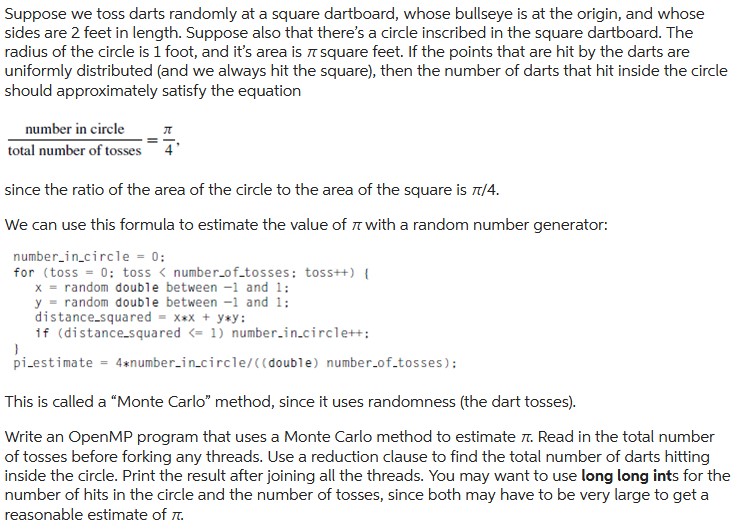Answered step by step
Verified Expert Solution
Question
1 Approved Answer
Suppose we toss darts randomly at a square dartboard, whose bullseye is at the origin, and whose sides are 2 feet in length. Suppose

Suppose we toss darts randomly at a square dartboard, whose bullseye is at the origin, and whose sides are 2 feet in length. Suppose also that there's a circle inscribed in the square dartboard. The radius of the circle is 1 foot, and it's area is square feet. If the points that are hit by the darts are uniformly distributed (and we always hit the square), then the number of darts that hit inside the circle should approximately satisfy the equation number in circle total number of tosses since the ratio of the area of the circle to the area of the square is 7/4. We can use this formula to estimate the value of with a random number generator: number_in_circle = 0; for (toss = 0: toss x = random double between -1 and 1: y number_of_tosses: toss++) { random double between 1 and 1: distance_squared=x*x + y*y: if (distance_squared
Step by Step Solution
★★★★★
3.37 Rating (153 Votes )
There are 3 Steps involved in it
Step: 1
include include int main long long numtosses numhits Read in t...
Get Instant Access to Expert-Tailored Solutions
See step-by-step solutions with expert insights and AI powered tools for academic success
Step: 2

Step: 3

Ace Your Homework with AI
Get the answers you need in no time with our AI-driven, step-by-step assistance
Get Started


